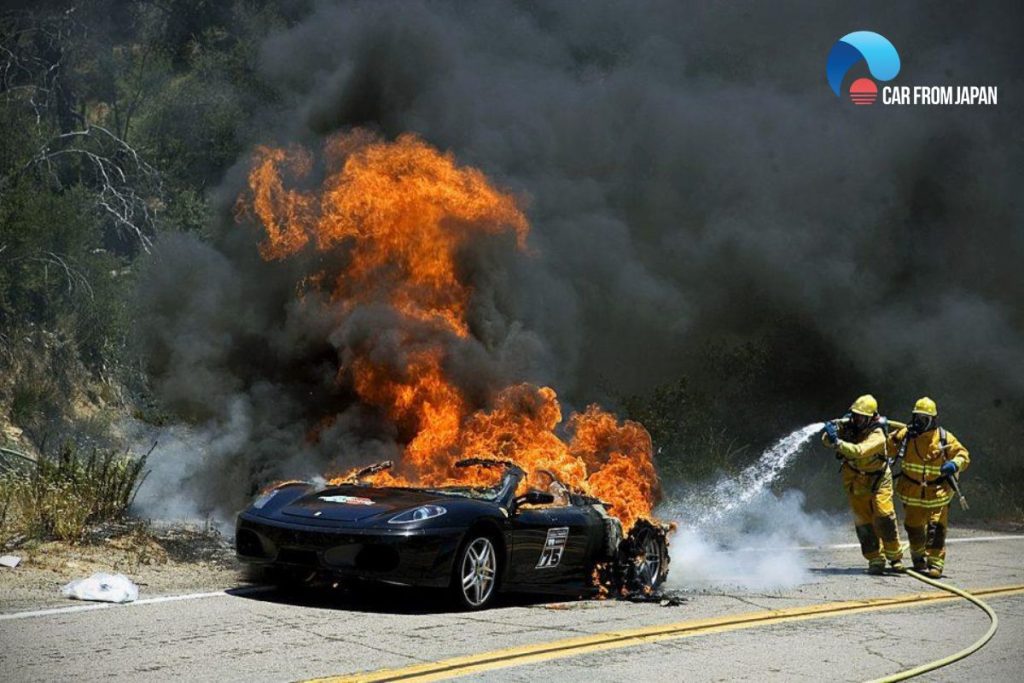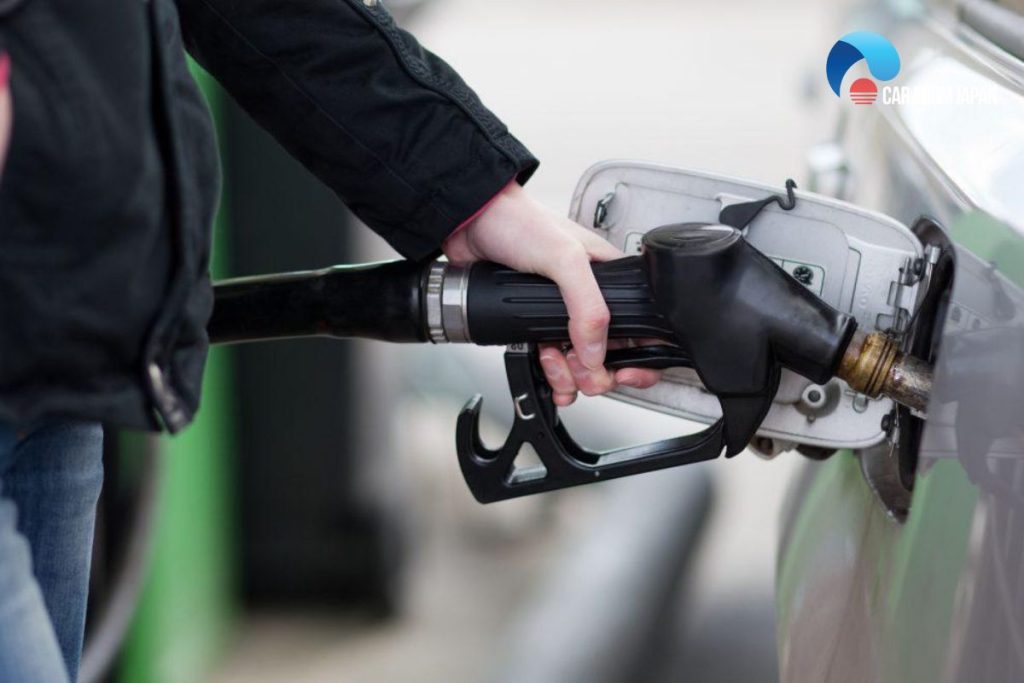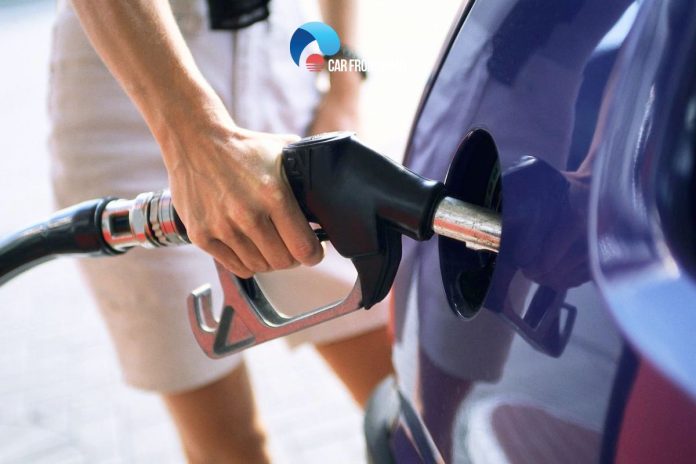Have you ever fueled your running car? Do you know it could be dangerous for you and your vehicle?
If the answer is NO, it is indispensable to know the consequences of pumping gas with car running. This way you can avoid various perilous situations and stay safe.
Contents
- What are The Consequences of Pumping Gas with Car Running?
- Bonus Tips When Refueling Your Vehicle
- FAQs Pumping Gas With Car Running
- Why do gas stations legally require you to turn off your engine, even if it’s modern and efficient?
- Can your check engine light come on from fueling with the engine running?
- Is the fire risk higher in certain climates or altitudes when refueling with the engine on?
- Why is it riskier to pump gas with the engine on in hybrid or start-stop cars?
- What happens if you pump gas with the engine on, and then forget to tighten the cap?
- The Verdict
What are The Consequences of Pumping Gas with Car Running?
In the majority of cases, it is not that dangerous to pump gas when the car is running. But, in many situations, it can result in a big payoff.
So, if you want to find out the cost of filling the car with gas while it’s running, you are at the right place.
Damages to car
The chances of fortuitous ignition are high because every part of the car is hot when it’ running. Only a tiny drop of gasoline is enough for the parts like the engine, exhaust tailpipe, and catalytic converter to catch fire.
Moreover, the fire can cause the die to static electricity. So, to avoid any hazardous situation, one should never top up the tank with a running car.
Depending on your car model and engine functioning, you can opt for pumping gas with the car running anyway.

Car explosion risk
According to recommendations from auto experts, while refueling, the vapor can spread into the air, especially on hot and dry weather days, and gasoline vapor will be radial with high concentration.
Therefore, if the car is still running, the engine and transmission temperature will heat up, combined with sparks, thereby catching gasoline vapors from the air.
This is considered the “perfect time” for the engine to catch fire and possibly cause an explosion.
In addition, according to analysis from researchers, when you step out of the car but the car is still on, your body is still electrically charged.
So there is a high risk that holding a fuel pump will cause burning. However, this situation happens very rarely.
Harmful vapors
When the hood is open, the possibility of gas vapors fleeing is higher. These gas vapors have loads of side effects on the environment and inhabitants as well.
Besides, many cars have this special feature of recovering the vapors, which is a savior.
The gas fumes blend with the air and cause congestion while breathing. In addition, it increases global warming too.
Therefore, it’s harmful to mankind in every possible way. So, when somebody asks you if can you pump gas with the car running Say no to it!
Harsh on pockets
Running a car can damage the vapor recovery. In this situation, you can consult someone who has sound car industry knowledge or take your vehicle to the nearest mechanic store.
The entire process involved in repairing the vapor recovery can be a costly affair. The approximate cost of the repair can be $200 to $1500. Besides, it may vary from place to place.
Leaving the car on while pumping gas in it is expensive. So, you can play safe by filling the tank by truing off the car.

Read More: How Can You Prevent Fire In The Car In The Hot Weather? Find Out Here!
Bonus Tips When Refueling Your Vehicle
Pumping fuel will become simpler, faster, and safer when the driver is equipped with the necessary knowledge about dangerous items and actions at the gas station.
Car refueling isn’t as simple as putting your car into a gas station and leaving it to a salesperson.
There are several standard principles that drivers need to pay attention to to shorten the operation, save time and costs, and ensure safety.
Do not top off the fuel tank
Some car owners when “filling up the tank” often let the fuel overfill. This is not only unsafe, and easy to cause fire and explosion, but also affects the paint of your vehicle.
In fact, some cars are often stained with yellow paint just below the fuel tank due to the influence of gasoline and oil spilling over the tank when pumping.
Absolutely not use the mobile phone
Using your cell phone (listening, calling, texting …) will form very strong electromagnetic waves, combined with the dense petroleum vapor environment, which will easily generate sparks.
This can cause serious explosions. Therefore, drivers absolutely do not use mobile phones at gas stations when refueling.
No smoking or using flammable objects
No smoking signs placed at gas stations indicate the seriousness of this problem. Just a small cigarette can start a fire or dangerous situations.
The same consequences will occur with flammable and explosive items such as matches, lighters, gas cans, batteries, power banks, air compressors… refueling at the gas station.
In addition, when refueling, the driver should adjust the vehicle so that the position of the fuel tank cap is towards the fuel pump hose. This saves time and manipulation for both the driver and the gas station staff and avoids obstructing other vehicles.
The driver can actively locate the fuel tank cap through the instrument panel. In addition, each car has a different design for opening the cap: integrated on the driver’s seat or under the dashboard, pressing the tank cap to open… the driver should also note this.
FAQs Pumping Gas With Car Running
Why do gas stations legally require you to turn off your engine, even if it’s modern and efficient?
Because a running engine still produces heat, sparks (from spark plugs), and electric currents. All of which increase fire risk near volatile fuel vapors.
Can your check engine light come on from fueling with the engine running?
Yes. Modern vehicles with EVAP (Evaporative Emission Control) systems can register pressure anomalies if the gas cap is opened while running, triggering a CEL.
Is the fire risk higher in certain climates or altitudes when refueling with the engine on?
Yes — in hot, dry conditions, fuel vapors are more flammable, and static discharge risk is higher.
At higher altitudes, pressure differences can also make vapor management trickier.
Why is it riskier to pump gas with the engine on in hybrid or start-stop cars?
Because the engine can unexpectedly restart or engage cooling fans while you’re fueling, introducing surprise ignition sources just as vapors rise.
What happens if you pump gas with the engine on, and then forget to tighten the cap?
You could get a check engine light from a loose gas cap, and the open system may allow vapors to leak out while the engine runs, slightly increasing fire risk.
Watch this video from 13WMAZ to learn more about car running while pumping!
The Verdict
While pumping gas with car running one should never forget about its penalties. You can save your vehicle, atmosphere, and money by not filling the gas with a running car.
Moreover, many people keep their vehicle running while refilling the tank as it could get jammed in the minus degrees.
So, depending on the weather and your car’s functionality, you can make your own decision. It’s better to be safe today than to be sorry tomorrow!




check grammar!!!!!!!
Fuck you
Who wrote this LMAOOO as a mechanic I can tell you I was laughing at this entire post. Gas fumes can increase global warming? Lmao how? Maybe after they’ve been burned, but only then. Please delete this post it has a very… “I took this out of my ass” feel to it.
I’m pretty sure that my engine, exhaust pipe, and catalytic converter are still hot when I turn the car off to pump gas. That’s completely irrelevant.
Only people who takes an exhaust pipe through their ass is named Lawrence
Anthony pumps gas while smoking crack and thats dangerous!
A real mechanic, what school did you go to? Are you aware that when you pump gas, vapors are realized by the transfer of gas from the pump into the tank? That’s why they have been changing the design of fuel receptacles for gas tanks in the recent years and why all gas pumps are now required to have that little shroud around the pump nozzle. The fact that you are so quick to dismiss and call ignorance shows the true level of your understanding of what you claim to be an expert in. Any REAL mechanic with a head on their shoulders would know this as we have to keep up with the latest trends in the auto industry. (Source) I have worked in the auto industry for over a decade.
Doing it now as we speak……p.s we are all still alive
Love you Zeus